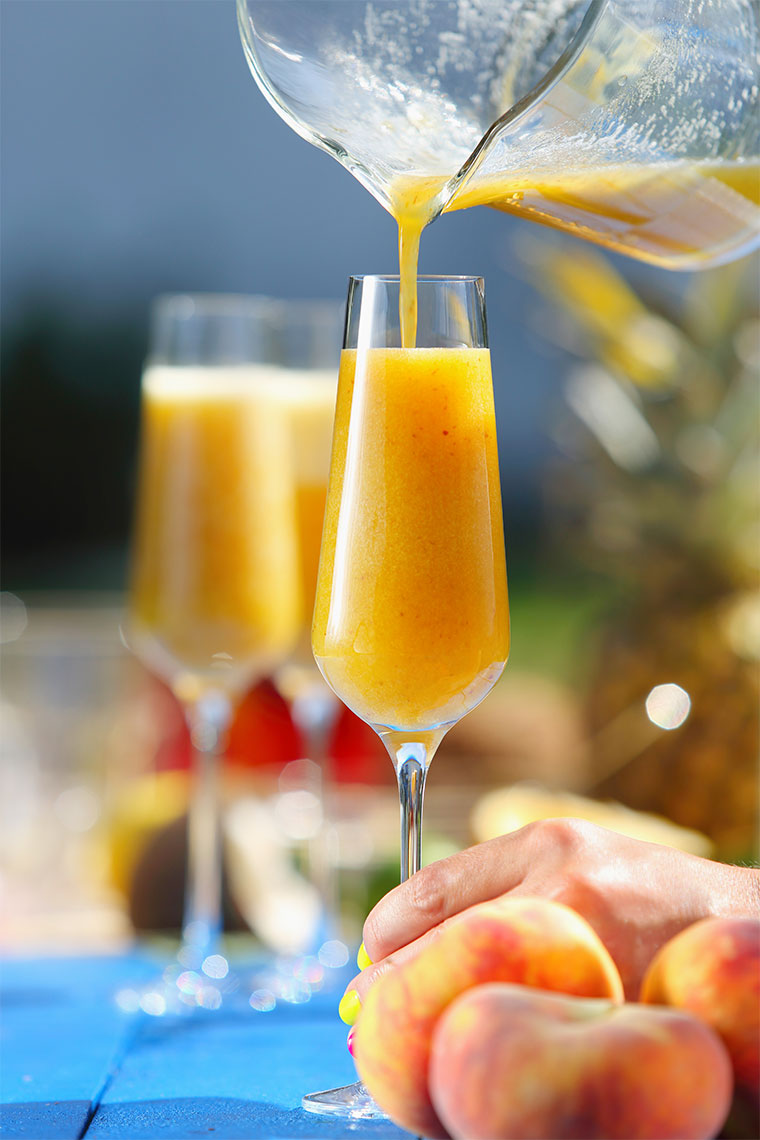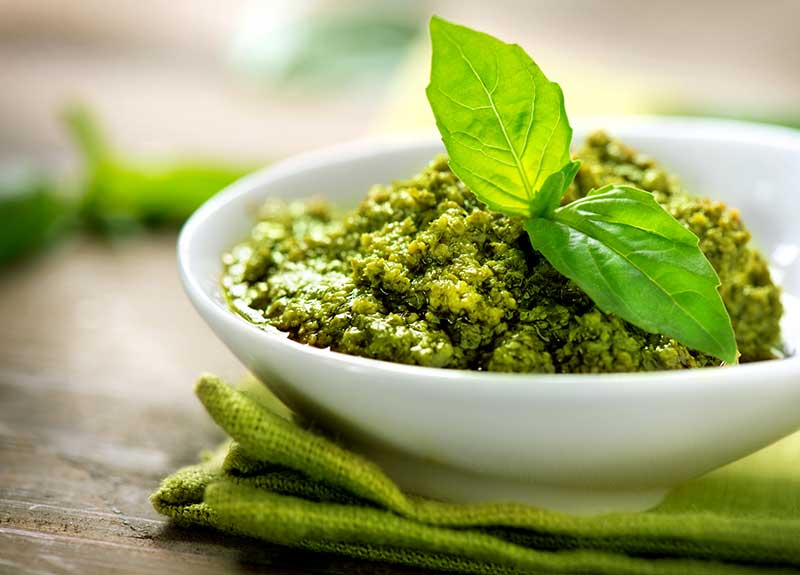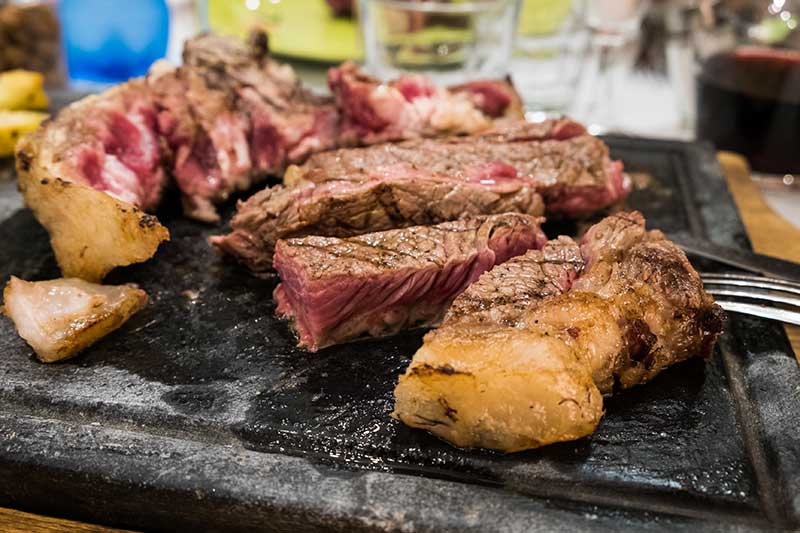There is no toast, no occasion or no celebration that does not invoke the opening of a bottle of sparkling wine…and what if one were to use it for cooking too? Yes, those little bubbles are also phenomenal in the kitchen! But what is spumante? What is the difference between spumante Champagne, Prosecco and sparkling wine? You often hear people define a wine ‘with bubbles’ as Champagne but nothing is more wrong and not well-accepted for the French…right?
Let’s clarify somewhat by starting with the origins, which, as with all ‘traditional’ productions, are extremely old. We do find proof of wines with some effervescence as far back as the Bible (1000 BC) (Psalm 75), as well as in the XVII Book of the Iliad of Homer and in the Aeneid of Virgil.
It seems that even Cleopatra offered Caesar cups of titan Falerno wine that had been made sparkling by adding an Ethiopian grape (Meroe). The Romans produced two types of ‘spumante’ wines: the Aigleucos and the Proptropum from wine must that had been preserved at low temperatures, the yeast of which would begin the slow fermentation forming gas that remained trapped inside the urns that were hermetically closed with pine tar and then immersed in deep wells.
The bubbles have a long and complex history, but in order to arrive to the Italian Spumante we are obliged to go across the Alps and precisely into the well-known area of Champagne. The wines of this area were appreciated as far back as the Middle Ages even if they were drunk without the ‘foam’ and with the addition of water – it was believed that wine without water was bad for you.
When Henry VII of the Tudor dynasty disembarked in France for ‘the Champagne’, a very flourishing period began which continued with the Court of Louis XIV of Bourbon, called the Sun King. The English loved this wine so much that they began to import it but they imported a new wine that had not fermented and that had in fact seemed to be effervescent. Surprisingly, we can say that the first Champagne was an English invention! From this moment on, there was a race for sparkling wine and as Godino (1718) testifies in the manual on how to make Champagne, regardless of all the French methods of obtaining bubbles (using spices, spirits and other ingredients), the English, by simply adding sugar to French wines, obtained a ‘forefather’ of Champagne.
Naturally, we all know that Champagne is linked to the figure of the monk Dom Perignon, to whom we owe not only the introduction of the concept of Curvee which consists in mixing the musts from different grapes and from different areas, but also the use of glass and cork.
The first Italian spumante came about in 1865, thanks to the collaboration of the Gancia brothers and of Count Augusto Vistarino who imported the Barbatella of Pinot Noir from Burgundy. For this sparkling wine, defined as ‘Italian champagne’ , no syrups were added at the end of the production, as was the custom in France, thus obtaining a type of ‘champagne’ with its main ingredient being muscato yet distinctly superior to the French one and less expensive.
According to a 2009 European legislature, sparkling wines were divided and classified based on the type (quality and pressure) and also on its sugar content: Sparkling Wine (VS Vino Spumante), also called ‘generic’ sparkling wine; Quality Sparkling Wine (VSQ); Aromatic Quality Sparkling Wine (VSQA). This last is a VSQ wine produced with a type of gassy sparkling wine grapes (VSG). The high quality sparkling wines at 20 degrees centigrade must have extra pressure of at least 3.5 bars, the generic sparkling wines (VS) must have 3 bars, while the sparkling wines between 1 and 2.5 bars.
Dosage zero (ultra dry, with only the sweetness of the original grapes)
Extra Brut (very dry)
Brut (dry) Extra dry (dry taste smoothed by a touch of sweetness – dry/soft)
Dry o Sec (medium sweet which means ‘barely / a little sweet’ )
Demi Sec (a sweet taste or a definite perceivable sweetness)
Sweet or Doux (the sweetness is predominant).
For a sparkling Menu from the Entree to the Desset! This menu is gluten free

Bellini Aperitif
◼2 parts of sugar free peach juice
◼4 parts dry Spumante
◼1 squirt of grenadine (optional)
For decoration: a slice of peach, raspberries
Preparation: mix all the ingredients in a wine glass and serve with a slice of peach and raspberries on a stick.
Spumante Risotto
◼300 gr of Carnaroli rice
◼25 gr of butter for browning the rice
◼25 gr of butter for the cream
◼20 gr EVOO
◼1 small onion or scallion
◼120 gr Parmigiano Reggiano or Grana Padana
◼Vegetable broth
◼500 ml Spumante Brut
1.Cut the onion or shallot very finely (must be almost like a cream) and saute it gently in oil and butter
2. Add the rice and let it brown over high heat (but be careful not to burn it!)
3. Add all of the champagne and stir
4.Continue stirring until it is completely cooked (18 minutes)
5. If necessary, add a little broth and salt
6. Once the rice is cooked, add the butter for the creaminess and the Parmigiano. Mix and serve
Chicken Breasts with Spumante and Herbs
◼200 gr chicken breasts cut very thin
◼1 lemon
◼Salt and pepper as needed
◼1 tbsp herbs (preferably fresh herbs – thyme, rosemary, sage -finely chopped)
◼50 gr butter
◼1 tbsp flour or corn starch
◼2 glasses of dry sparkling wine
1. With a meat beater, pound the chicken cutlets (be careful not to break them);
2. Prepare a dressing with lemon, salt, peppers, and the mixed herbs;
3. Put the cutlets in the dressing mixture and let marinade in the fridge for 30 minutes;
4. Sauté the scallion in the butter; add the chicken cutlets that had been previously dipped in the flour and cook with a low flame until they are golden;
5. Add the sparkling wine and let them cook until the sauce gets to a rather dense consistency.
Serve immediately.
Spumante Gelato
◼420 gr milk
◼230 gr cooking cream
◼170 gr sugar
◼180 gr sparkling wine
◼2 gr Xanthan Gum or Agar (to help stabilize the ice cream and to keep it from melting quickly)
1. Whisk the cream, milk, sugar and Xanthan for about one minute;
2. Add the champagne and blend it for an additional 30 seconds.
3. Place it in the freezer for about 25 minutes.
It is excellent served with strawberries or other types of berries.





























